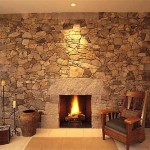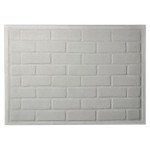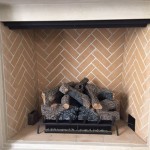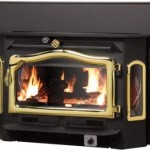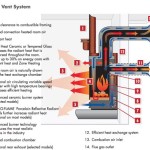Energy House Fireplaces: A Comprehensive Guide
Fireplaces, traditionally a source of warmth and ambiance, have evolved significantly alongside advancements in energy efficiency and environmental consciousness. Energy House Fireplaces represent a specific category designed to maximize heating potential while minimizing energy waste. This article delves into the key features, benefits, and considerations associated with Energy House Fireplaces, providing a comprehensive understanding for homeowners and professionals alike.
Understanding the Concept of Energy House Fireplaces
The term "Energy House Fireplace" isn't a precisely defined industry standard, but rather a descriptor applied to fireplaces that prioritize energy efficiency. These fireplaces typically incorporate design features, materials, and technologies aimed at reducing heat loss up the chimney, increasing radiant heat output into the room, and improving overall heating performance. They often stand in contrast to older, traditional fireplaces which can sometimes act as a net energy drain on a home, drawing warm air out of the house and up the flue even when not in use.
Energy efficiency in a fireplace is generally achieved through a combination of factors. These include the use of sealed combustion systems, insulated fireboxes, improved damper mechanisms, and heat-circulating designs. The specific technologies employed can vary widely depending on the type of fireplace, its fuel source (wood, gas, or electric), and the manufacturer's design philosophy.
One critical aspect of understanding Energy House Fireplaces is recognizing the difference between radiant and convective heat. Traditional fireplaces primarily produce radiant heat, which warms objects and people directly in front of the fire. However, the efficiency of radiant heat alone can be limited. Energy efficient fireplaces often incorporate convective heating elements, which circulate warm air throughout the room, providing more even and effective heating.
Key Features and Technologies in Energy House Fireplaces
Several key features and technologies contribute to the energy efficiency of modern fireplaces. These features are designed to minimize heat loss, maximize heat output, and improve overall performance. Understanding these elements is crucial for selecting the right fireplace for a particular home and heating needs.
Sealed Combustion Systems: These systems draw combustion air directly from outside the house, rather than using air from inside the living space. This prevents the fireplace from consuming warmed air from the room, which would otherwise be drawn in to feed the fire and then exhausted up the chimney. Sealed combustion also reduces the risk of backdrafting, where combustion gases can be drawn back into the home.
Insulated Fireboxes: The firebox is the heart of the fireplace, where the combustion occurs. Insulating the firebox helps to retain heat within the fireplace and directs it outward into the room, rather than allowing it to escape through the walls of the firebox. Insulation materials can include ceramic fiber blankets, firebrick, or cast iron.
Improved Damper Mechanisms: Traditional dampers, located at the top of the chimney, are often leaky and ineffective at sealing the flue when the fireplace is not in use. Energy efficient fireplaces often incorporate improved damper designs, such as top-sealing dampers, which provide a more airtight seal. Some gas fireplaces utilize automatic dampers that close when the fireplace is turned off, further preventing heat loss.
Heat-Circulating Designs: These designs utilize fans or blowers to circulate warm air from the firebox into the room. The blower draws cool air from near the floor, passes it through a heat exchanger within the fireplace, and then discharges warmed air back into the room. This forced-air circulation significantly improves the efficiency of the fireplace by distributing heat more evenly throughout the space.
Zone Heating Capabilities: Many Energy House Fireplaces offer zone heating capabilities, allowing homeowners to heat only the rooms they are using, rather than heating the entire house. This can result in significant energy savings, especially during shoulder seasons when only supplemental heating is required.
Programmable Thermostats: Integrating a programmable thermostat allows precise control over the fireplace’s operation. The thermostat automatically adjusts the flame height or heat output to maintain a desired temperature, optimizing energy consumption and ensuring comfortable room conditions.
Direct Vent Technology: Primarily used in gas fireplaces, direct vent technology utilizes a sealed system where both combustion air intake and exhaust gases are vented directly to the outside through concentric pipes. This system eliminates the need for a traditional chimney and offers greater flexibility in terms of fireplace placement within the home. Direct vent systems also enhance safety by preventing the backdrafting of combustion gases.
Benefits of Choosing Energy House Fireplaces
Opting for an Energy House Fireplace offers a range of benefits beyond just providing warmth. These benefits include cost savings, environmental advantages, and improved home comfort.
Reduced Energy Consumption: The primary benefit of an Energy House Fireplace is reduced energy consumption. By minimizing heat loss and maximizing heat output, these fireplaces require less fuel (whether wood, gas, or electricity) to maintain a comfortable room temperature. This translates directly into lower heating bills.
Lower Heating Costs: Reduced energy consumption directly leads to lower heating costs. Depending on the type of fireplace and the homeowner's heating habits, the savings can be substantial, especially compared to older, inefficient fireplaces or central heating systems used for zone heating.
Increased Home Comfort: Energy efficient fireplaces often provide more even and consistent heating compared to traditional fireplaces. Features like heat-circulating designs and programmable thermostats contribute to a more comfortable indoor environment by eliminating temperature fluctuations and cold spots.
Environmentally Friendly: By reducing energy consumption, Energy House Fireplaces contribute to a smaller carbon footprint. Using less fuel means less greenhouse gas emissions and reduced dependence on fossil fuels. Some wood-burning fireplaces may also be designed to burn wood more cleanly, reducing particulate emissions and improving air quality.
Enhanced Home Value: Installing an Energy House Fireplace can increase the value of a home. Buyers are increasingly interested in energy efficiency, and a modern, efficient fireplace can be a selling point. It demonstrates a commitment to sustainability and can add aesthetic appeal to the home.
Improved Safety: Features like sealed combustion systems and direct vent technology enhance safety by preventing the backdrafting of combustion gases and reducing the risk of carbon monoxide poisoning. These features offer peace of mind and contribute to a safer home environment.
Flexibility in Design and Placement: Modern Energy House Fireplaces offer greater flexibility in terms of design and placement compared to traditional fireplaces. Direct vent gas fireplaces, for example, can be installed in a variety of locations within the home, without the need for a traditional chimney. Electric fireplaces offer even greater flexibility, as they can be simply plugged into a standard electrical outlet.
Reduced Maintenance: Many Energy House Fireplaces require less maintenance than traditional fireplaces. Gas and electric fireplaces, in particular, eliminate the need for wood storage and ash removal. Some models also feature self-cleaning mechanisms, further reducing maintenance requirements.
Considerations When Choosing an Energy House Fireplace
Selecting the right Energy House Fireplace requires careful consideration of several factors, including fuel type, heating needs, venting options, and budget. Making an informed decision is essential to ensuring optimal performance and satisfaction.
Fuel Type (Wood, Gas, or Electric): The choice of fuel type is a primary consideration. Wood-burning fireplaces offer the traditional ambiance and heat output of a real fire but require wood storage and regular maintenance. Gas fireplaces provide convenience and ease of use, with adjustable flame heights and remote control operation. Electric fireplaces offer the greatest flexibility and ease of installation but may not provide the same level of heat as wood or gas fireplaces. The choice depends on personal preferences, lifestyle, and budget.
Heating Needs and Room Size: The size of the room to be heated and the desired level of warmth should be considered when selecting a fireplace. Fireplaces are rated by their BTU (British Thermal Unit) output, which indicates their heating capacity. A larger room will require a fireplace with a higher BTU rating. Understanding the square footage of the space is essential for selecting an appropriately sized fireplace.
Venting Options: The venting requirements for a fireplace vary depending on the fuel type and design. Wood-burning fireplaces require a traditional chimney. Gas fireplaces can utilize direct vent, B-vent, or vent-free systems. Electric fireplaces do not require any venting. Choosing the appropriate venting option is crucial for safe and efficient operation.
Installation Costs and Requirements: Installation costs can vary significantly depending on the type of fireplace and the complexity of the installation. Wood-burning fireplaces typically require extensive masonry work for chimney construction. Gas fireplaces may require gas line installation. Electric fireplaces are the easiest to install, often requiring only a standard electrical outlet. Obtaining several quotes from qualified installers is recommended to determine the total cost of installation.
Budget and Long-Term Costs: The initial purchase price of a fireplace is only one aspect of the overall cost. Long-term costs include fuel consumption, maintenance, and potential repairs. Consider the cost of wood, gas, or electricity, as well as the cost of chimney cleaning and other maintenance tasks. Weighing the initial investment against the long-term operating costs is essential for making a financially sound decision.
Aesthetic Preferences: Fireplaces are often a focal point in a room, so aesthetic preferences should be considered. Choose a fireplace that complements the style and décor of the home. Modern fireplaces are available in a wide range of designs, from traditional to contemporary, and can be customized with various finishes and accessories.
Local Building Codes and Regulations: Ensure that the chosen fireplace complies with all local building codes and regulations. These codes may specify requirements for venting, clearances, and safety features. Consulting with a building inspector or qualified contractor is recommended to ensure compliance.
Incorporating Energy House Fireplaces into a home can significantly impact energy efficiency, comfort, and aesthetic appeal. Understanding the available technologies, benefits, and considerations outlined above empowers homeowners to make informed decisions and select the optimal fireplace for their individual needs and preferences.

Modern Fireplaces And Inserts The Energy House

About Us The Energy House

Fireplace Portfolio The Energy House

Fireplaces Energy House

Modern Fireplaces And Inserts The Energy House

Traditional Gas Fireplaces The Energy House

Modern Fireplaces And Inserts The Energy House

Are Electric Fireplaces Energy Efficient Direct Learning Center

2 Sided Open Corner Fireplace By The Energy House Contemporary Gas Modern
How Do I Have A Fireplace That Is Energy Efficient Irish Independent

